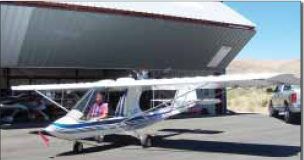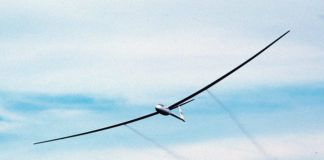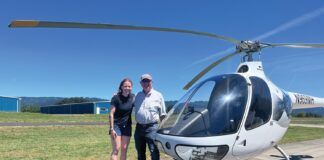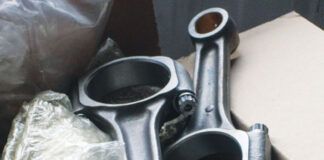Editors Note: Were delighted to introduce Mel Asberry, an experienced Experimental-aircraft builder and a Designated Airworthiness Representative, one of many private citizens given the authority by the FAA to perform airworthiness sign-offs on Experimental/Amateur-Built aircraft. In this series, well cover the major aspects of the final approval for flight and, for that matter, wed also like to open the floor to questions. Send them to [email protected] with Ask the DAR in the subject line.-Ed.
I suppose my role as a DAR is a natural extension of my love of aviation. Like many, I started building models as a kid, then started flying big airplanes in 1967. I bought my first airplane, a 1941 T-Craft, in 1968. In 1970, I traded up to a Cessna 170B, then to a Mooney M20C in 1972. I got my A&P certificate in 1973. After the Mooney came a Globe Swift GC-1B.
Then, in 1982, I got interested in ultralights. My wife of 30 years, Ann, got her first airplane ride in the Swift and achieved her private ticket in 1985. Together Ann and I have built seven amateur-built airplanes including two ultralight types, a Moni Motorglider, a Dragonfly Mk2, two RV-6s and a Zenair CH 601HDS. We are currently building a scratch-built biplane.
Building Experience
Back in the early 1980s I decided it was time to build a real homebuilt airplane. My wife and I had completed a couple of two-place ultralight types, but they just werent challenging to build. John Monnett had designed a small single-place motorglider called the Moni, which cruised at 100 mph on about 25 hp and was fully aerobatic.
Because the original mono gear was not compatible with the narrow runway at our airport, I designed a conventional landing gear for the airplane. At first Monnett did not encourage my modification of his design, but after a lengthy discussion, I convinced him that I had done my homework and had designed the gear using Landing Gear Design for Light Aircraft by Ladislao Pazmany as a design source. The gear design turned out to be successful and has been used on several Moni Motorgliders.
Dick Cavin, one of the early Thorp T-18 gurus and an EAA technical counselor, wrote an article on the airplane and it was published in Sport Aviation in May 1985. Cavin took me under his wing and encouraged me to become a technical counselor for EAA. These counselors are appointed based on their expertise on different types of construction. The requirements are somewhat flexible, but basically you must have built and flown an amateur-built aircraft, be an A&P mechanic, restored an aircraft or have other accomplishments showing experience and expertise. I guess I fit the bill.
The Road to DAR
After working as a tech counselor for several years, I became interested in becoming a DAR. I talked with several guys at the local FAA Flight Standards District Office (FSDO) and was told that it was difficult for anyone to become a DAR without being retired FAA.
Im not one to give up easily, so I kept after them until I finally found an inspector who was interested in helping me. He told me that first I would need several letters of recommendation from known mechanics and inspectors around the area. This was really not a problem, as I had worked closely with these guys for several years. The next step was getting my application through the National Examiner Board. This was the difficult part where all paperwork has to be exact! Here you must show that you know and understand FARs and how to interpret them. Once I got over that hurdle, the rest became much easier. I got my designation in October of 1999 for Experimental/Amateur-Built aircraft.
When the new Light Sport category came out, because I also had an extensive background with ultralights, the FAA asked me to participate in a meeting in Oklahoma City to determine what material should be included in the LSA DAR seminar. Coming out of that original meeting, Joe Norris and I were among the first DARs to be issued function codes 47 (ELSA) and 48 (SLSA). Experimental LSAs are similar to amateur-builts as far as the regulations go, but Special LSAs are a whole new breed. The Specials, while they are factory built, are extremely restricted as far as maintenance and modifications go.
Are We There Yet?
Id like to open this series with some general discussion of what Im looking for as a DAR. Most builders think that once all the pieces are together and it looks like an airplane, Its done!
Well, not quite. Now we start the paperwork. (Actually, you should have started the paperwork much earlier, but this is where I come in.) First the aircraft has to be registered with the FAA. Once thats done its time to notify the DAR, who then goes to work. He or she will ask you a few questions about what engine and propeller you are using and if the combination is certificated. Remember if there are any modifications or aftermarket items added to the engine, it will no longer be certificated. The most common things here are aftermarket ignitions and fuel injection units-but anything that takes the engine away from its as-certified state will make it Experimental, and increase the Phase I fly-off period from 25 to 40 hours.
The DAR also must check with Oklahoma City to see that an airworthiness certificate has not been denied. If a denial has been issued, the DAR will want to know what you have done to correct the situation, and will also talk with you about your request for a flight-test area. There is some flexibility here as long as it doesn’t involve flying over densely populated areas or on congested airways. There are some airports in large cities where first flights will not be allowed simply because there is no safe place to go in case of an engine failure or some other emergency. A DAR will spend more time with research and paperwork than actually looking at the aircraft.
The primary job of a DAR is to inspect and determine the compliance with FARs and safety of flight of a previously non-certificated aircraft. Our job requirement is actually to ensure compliance more than safety of flight issues. However, most any DAR will go much deeper into the safety aspect.
If an aircraft is kitbuilt, the DAR will want to ensure that it was built per the plans. Or if modifications have been made, were they approved by the designer? Does the builder have engineering documentations to show the feasibility of the mod? Often a small modification that seemingly increases strength may simply shift the load to a weaker point. For example, an airplane wing is designed with the load distributed along the span. If you strengthen the spar at, say, the strut attach point, it will no longer bend at that point, causing more of the load to be concentrated at the root.
Fuel system modifications are something I look at seriously. A poorly designed fuel system can make someone an unintentional glider pilot in a matter of seconds.
Common Discrepancies
Here are the things I find most often.
The data plate doesn’t match the registration. The data plate, registration, and airworthiness application must match exactly. Many times a person will engrave his or her name on the data plate with their first name first or will use a nickname. The registration has the last name first and you may use a nickname only if thats what you used on the registration.
Loose or missing jam nuts on control rod ends. Normally control rod ends all have right-hand threads. If jam nuts are not tight, the rod can turn. This will not affect adjustment because the loosening of one end is taken up by the tightening
of the other. However, if there are sufficient threads, the loosening end can come completely off. At this point, adjustment is definitely affected!
Missing safety wire where needed. Example: On many of the ELSA aircraft, the prop manufacturer says that its prop bolts need not be safetyd. This is contrary to standard aircraft practices, so I require it. To get by my inspection the prop bolts must be safetyd in some way. You may either use jam nuts or safety wire.
Short bolts. There must be a minimum of one full thread extending through the lock nut. Nylock nuts may be used anywhere the temperature is not excessive and the bolt is not subject to rotation. Firewall forward, you might want to consider all steel lock nuts. Anywhere the bolt is subject to rotation you must use a drilled bolt, a castle nut and either a cotter pin or safety wire.
Believe it or not, missing bolts or nuts are common.
Other items include insufficient range on engine control cables. You must be able to operate all controls from the cockpit throughout the full range of the device. Example: The throttle, mixture, prop governor, etc. must go from stop to stop.
The landing gear will retract but not come down. Believe it or not, Ive seen this more than once.
Improperly rigged controls. One check I do is to push the stick to one side and align the flaps with the down aileron. Then I push the stick to the other stop and see if that aileron aligns with the flap. If it doesn’t, something is not rigged correctly.
Take It Seriously, Not Personally
When the DAR finds several minor discrepancies on your aircraft, you should not feel bad. Everyone misses things, especially when you are so close to the project. Finding those misses is our job. We are simply another set of eyes with a little more experience to help you find these things in the hangar instead of on that first flight. All that said, hit me with your questions and Ill do my best to answer them.










